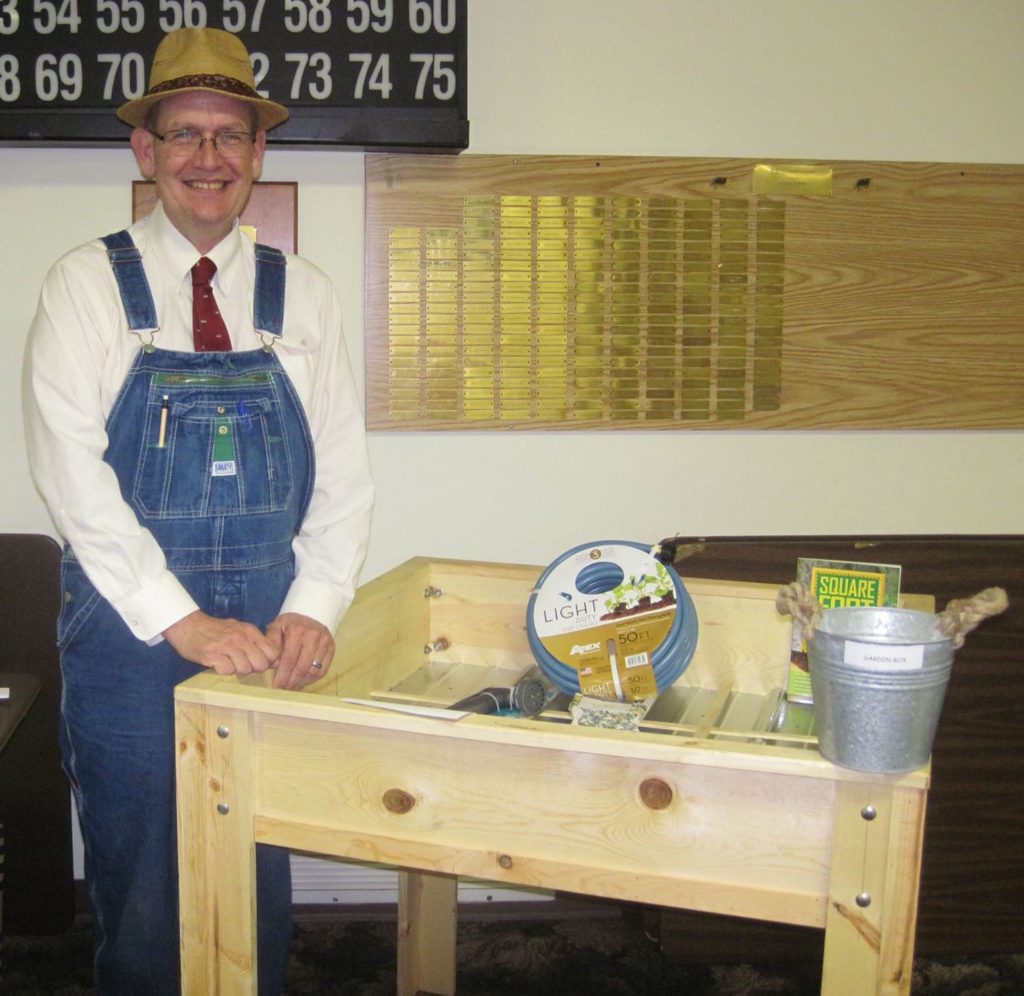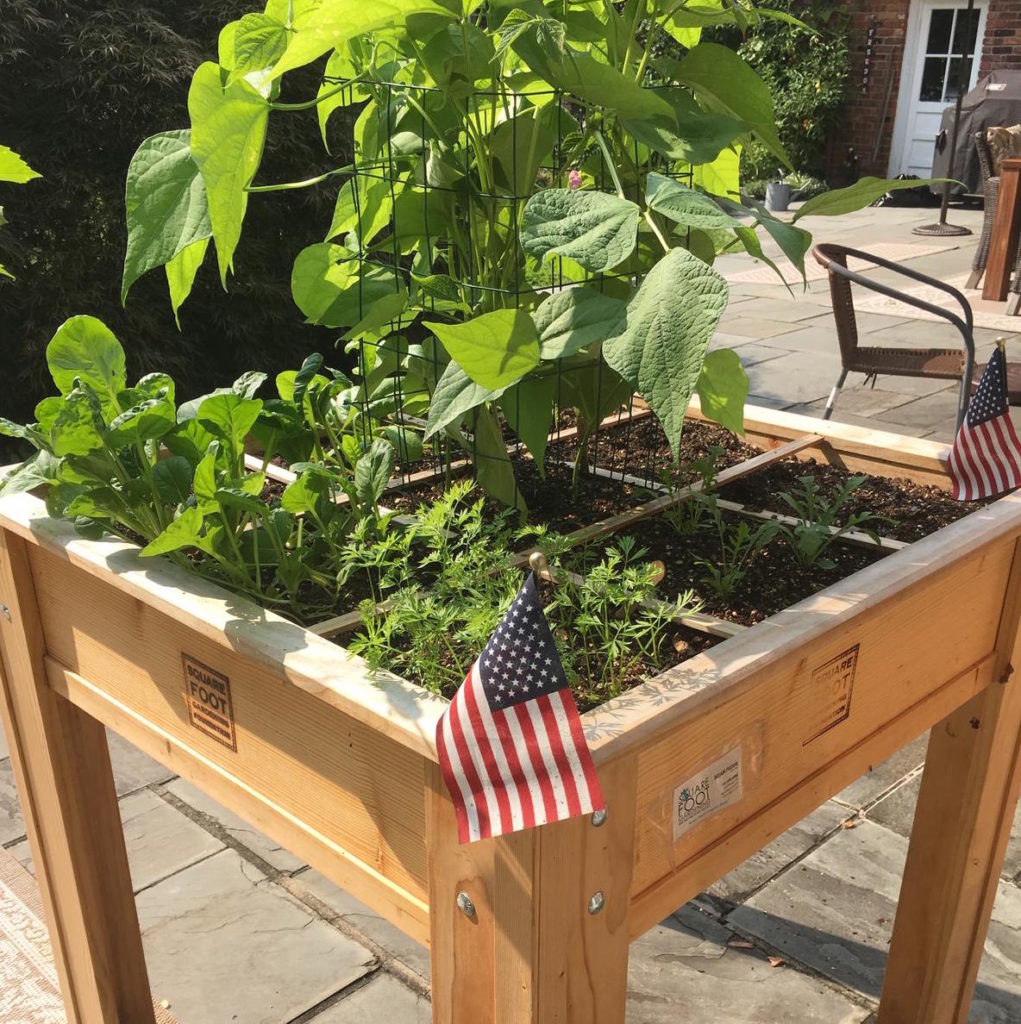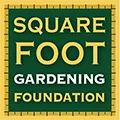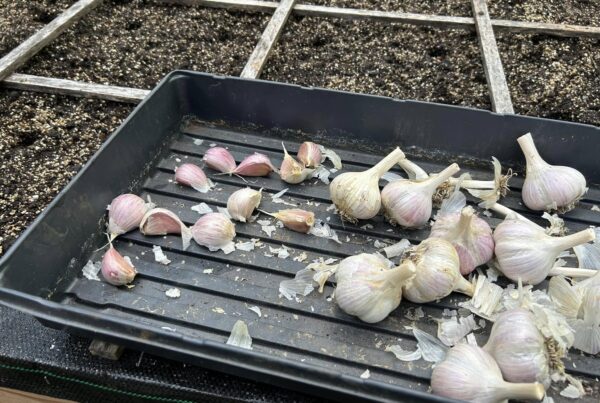Square Foot Gardening helps lots of new gardeners be successful at vegetable gardening.
What happens if you’re mobility-challenged, though?
Traditional Square Foot Gardening involves a raised bed on the ground.
 Minnesota Certified Instructor Brian Fuder had another idea. He says, “I watched Mel Bartholomew’s [the founder of Square Foot Gardening] PBS television show in the early 80s while I was in high school,” joking, “There wasn’t a lot to do in Minnesota in the winter! We only had three TV channels back then.” He said he would watch Mel’s program and decided he wanted a job like him.
Minnesota Certified Instructor Brian Fuder had another idea. He says, “I watched Mel Bartholomew’s [the founder of Square Foot Gardening] PBS television show in the early 80s while I was in high school,” joking, “There wasn’t a lot to do in Minnesota in the winter! We only had three TV channels back then.” He said he would watch Mel’s program and decided he wanted a job like him.
“I started playing with Square Foot Gardening, taking the ideas from the TV show and running with them.” He didn’t have the book at that time. “I did as much as I could in my parents’ garden. As got older and had own home, I would garden and always remember Mel’s program, and would experiment a little more with Square Foot Gardening.”
Around the time Brian bought his first home, he found the Square Foot Gardening Book. He says, “Four or five years ago, somebody asked me about teaching a Square Foot Gardening Class. They said, ‘You do so much with this. Why don’t you teach it?'”
He says he wanted to be official, so he got in touch with Amie Hall and went through the certified instructor program. “I’ve been going ever since!” he says.
 A New Project: Elevated Beds
A New Project: Elevated Beds
One day, he says, he was looking at the whole Square Foot Gardening process and wanted to help his dad. “My dad always loved gardening but he was starting to have knee problems. He couldn’t bend over. He said, ‘I can get on the ground but then I can’t get up.’ So I decided to build an elevated Square Foot Gardening bed for him.”
Brian wanted to make the bed sturdy so that his dad could lean on it. He says, “I have a little more in common with Mel than people might realize. I’m a civil engineer and have been teaching engineering since the late 1990s.” (For newbies to Square Foot Gardening, Mel Bartholomew was an engineer and developed the Square Foot Gardening to find a more efficient way to garden and a more efficient way to use resources in the garden, including seeds, soil, and water.)
Brian has a woodshop in his backyard. He started putting a few elevated beds together and people asked for more. “I haven’t kept an exact count, but I think I’ve built about 12o,” he says. “I’ve probably donated about 90 of them. I’ve installed beds at hospitals, nursing home facilities, and given them to individuals. If someone with a mobility issue requests a garden, I get one to them.”
Brian fiercely guards the privacy of the individuals to whom he donates beds and has few pictures of them in action, but he has some lovely stories.
Enriching Lives Through Gardening
“I have a neat story from last spring,” he says. “I donated a bed to a lady with muscular dystrophy. She is a mother of three and is wheelchair bound. She bought three more to give away to her family members.”
One of his favorite stories was when he was asked to build a garden for two sisters in Minnesota who have been blind since birth. “They love to garden but they get lost when they’re on the ground. I went over to visit them and one of the sisters grabbed my hand and slammed it down on the edge of the bed. ‘Look,’ she said, ‘I can put Braille labels on the edges of the garden and then I’ll know what everything in each of the 9 square feet is. I’ll know where the plants are and where the weeds are.'”
He says they have loved it. “Last summer was their fourth summer. Nobody is allowed to touch the garden except for them.”
Brian says that when he visits people with his gardens, he hears them talk about how the gardens have taken them back to a place that is safe to them. It brings up memories for them. “The gardens have brought together senior communities and daycare communities. When they’re all gardening together, you wouldn’t know who was young and who was older for how much giggling goes on.
We’re so proud of Brian and happy to share his story with you.
Keep up the good work!




